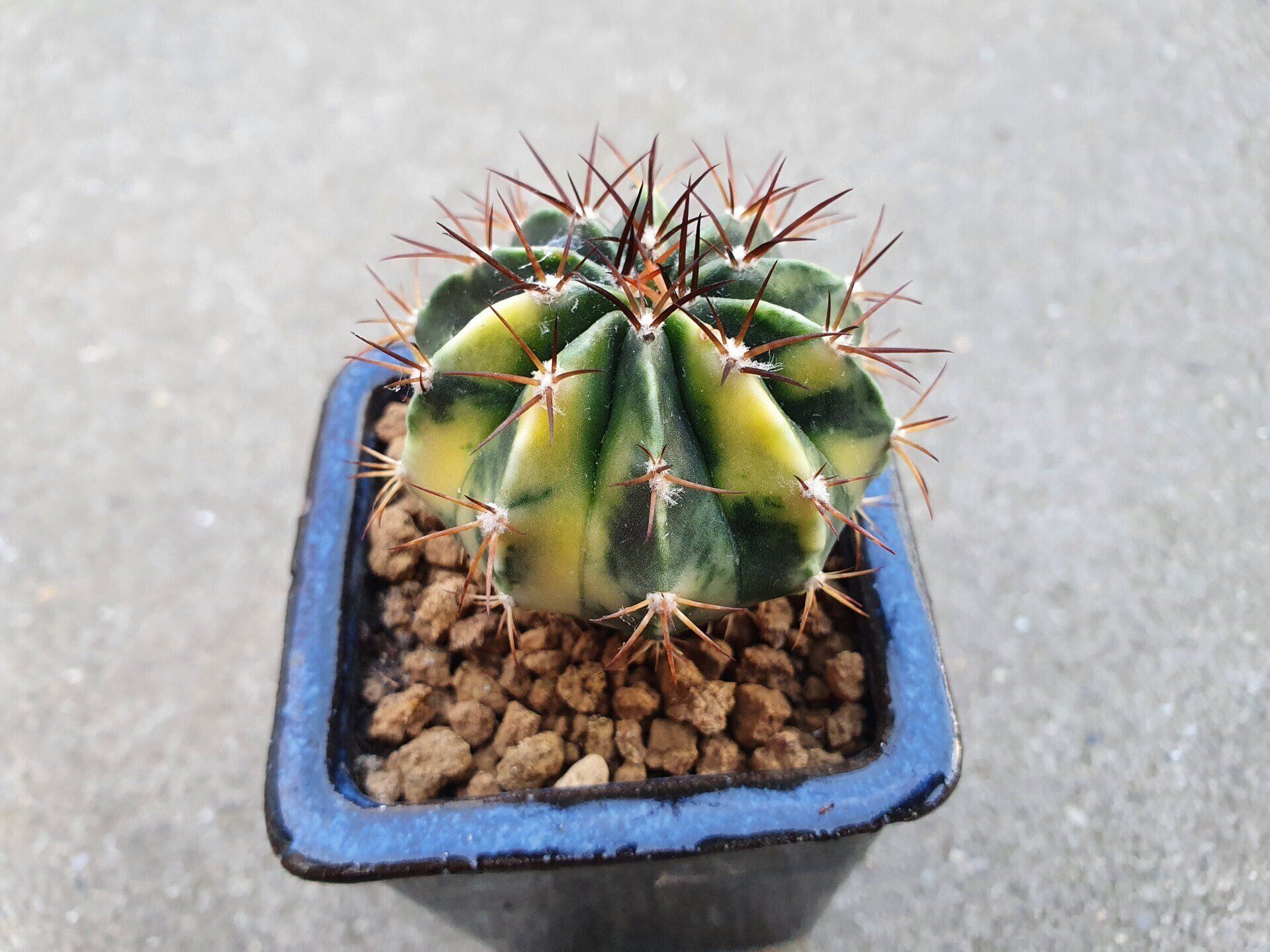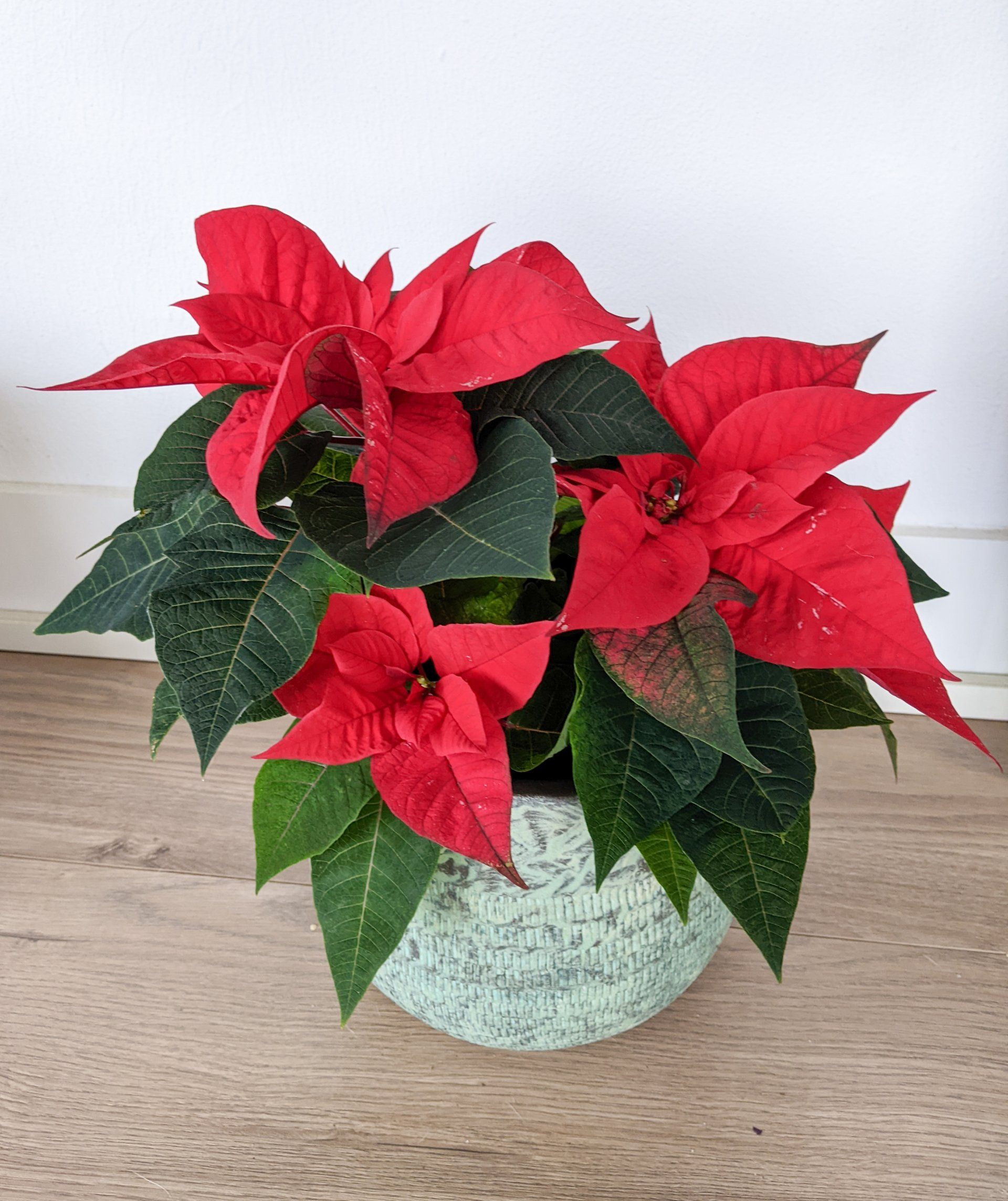555-555-5555
mijnmail@mailservice.com
Cacti
Spiky statues
What does it mean if you receive a cactus as a gift? It's probably your birthday or a houswarming gift. After all, a stylish cactus is a hip accessory in a modern living room. However, it was not a suitable gift in the past: it was said that if you gifted someone a cactus, you would secretly experience the recipient as 'prickly' and unpleasant. Or maybe you underestimate the recipient's green thumb? Since a cactus just stand there, on your windowsill, whatever you do or don't do for it. But is that really the case? Let's take a closer look at these spiky statues.
This article appeared in the Dutch Gardeners' World magazine in May 2022. Download the original (in Dutch!) or read the translation below.

Rogier & me at "Mother-in-law's chair" (Echinocactus grusonii). Photo byPetra Sonius
Rogier: aAny plant that is swollen and has spines is quickly called a cactus. But that's a misconception. Cacti are a family of plants, just like Orchids. So in other words, all cacti are related to each other. For example, the Pereskia is a cactus, but with its slender branches and soft leaves, this tree is not easily recognized as a Cactus. The Euphorbia horrida, on the other hand, has the appearance of a Cactus but is (as we wrote in an earlier article) related to the Poinsettia and absolutely not a cactus. So the definition of cactus is a kinship thing and not based on looks. Actually, that's nothing crazy because we all know that a Christmas cactus is a cactus, but of course it hardly resembles a typical cactus.
The cactus family is exclusively found in the new world. From Canada to Chile. Well, almost exclusively. A single species occurs naturally outside the Americas and that is Rhipsalis baccifera. In addition to tropical America, this species also occurs in Tropical Africa, the Islands in the Indian Ocean and even reaches Asia in Sri Lanka. Humans have also contributed to the spread of Cacti. In particular, the disc cactus (Opuntia) is now a well-established, sometimes even invasive species in many arid, warm regions of the earth. Southern Europe is full of them and many people think that these plants grow in the wild there.

Titel dia
Schrijf uw onderschrift hierKnop
Tephrocactus geometricus, that I called "Snowman cactus"
Marieke: You see a disc cactus (Opuntia) on the windowsill. They are also called "Mickey Mouse cactus": when two new leaves grow on top of one leaf, you see a resemblance to the well-known Disney mouse. Strongly related to the Opuntia is the genus Tephrocactus, and the Tephrocactus geometricus in particular is a wonderful weirdo. He doesn't have a Dutch name yet, so I christened him 'snowman cactus', I'm sure you see why (photo above).
The ceroid cacti are well known. It's 'the' cactus that a child (and anyone who likes to play pictionary - yours truly included) would draw: a narrow, high arch with spikes. However, there are also special variants. For instance
Pilosocereus fulvilanatus, a blue-gray cactus with brown vertical edges with spines. The
Cephalocereus senilis
is also called the 'old man cactus': it is covered with grey-white hairs. This protects the plant from the sun. An old monkey-tailed cactus (Cleistocactus winteri subs. colademononis) also looks hairy, but that's because the spines of this hanging cactus are long, thin and white.

Titel dia
Schrijf uw onderschrift hierKnop
Titel dia
Schrijf uw onderschrift hierKnop
Titel dia
Schrijf uw onderschrift hierKnop
Ceroid cacti, spherical cacti & Opuntia
Other hanging cacti are of course Rhipsalis, also called mistletoe cacti. Like the well-known schlumbergeras - such as the Christmas cactus - these are tropical cacti. So they drink a little more and they can withstand a spray, for example to combat spider mites. One of my favorite cacti is also a tropical one: the ric-rac cactus (Epiphyllum anguliger). The care is comparable to the holiday cacti, though t doesn't flower ar easily and abundantly. They are mostly loved for their weird leaf shape (see photo below).
Spherical cacti are also well-known species for our window sills. For example, mother-in-law's cushion (Echinocactus grusonii, see photo Rogier and me at the top). However, I would not take this name too literally: it would be a shame if such a beautiful cactus was crushed…
Titel dia
Schrijf uw onderschrift hierKnop
Ric-rac cactus (Epiphyllum anguliger)
R: Most cacti are well adapted to drought. But not every desert is necessarily warm. In the northernmost and southernmost areas, cactus species can be found that withstand winters that are sometimes even colder than ours. It is nice to grow these varieties outside in the garden. The biggest problem here is moisture. Our winters in particular are too wet for most species. Now you can come up with all kinds of solutions like roofs and other things. But there are also species that do reasonably well without this protection. Especially if you plant them in stone pots filled with very well-draining soil. I myself have had species such as the North American
Echinocereus coccineus and the Chilean
Maihuenia poeppigii outside for years. They can both withstand frost and humidity, make beautiful flowers and, if you pollinate them, even edible fruits. If you go for the fruit, put several plants of one species together and pollinate the flowers of the different plants with each other by means of a brush.

Titel dia
Schrijf uw onderschrift hierKnop
Titel dia
Schrijf uw onderschrift hierKnop
Titel dia
Schrijf uw onderschrift hierKnop
Titel dia
Schrijf uw onderschrift hierKnop
Titel dia
Schrijf uw onderschrift hierKnop
Photo's by Rogier van Vugt
M: Before you start eating that fruit, take some seeds out of it! Sowing cacti is very easy, especially if the seed is fresh. No big cactus in your garden? Buy dragon fruit at the market (in The Netherlands we often have the pink variety with white flesh, Hylocereus undatus). Delicious, and packed with seeds. Within a few weeks you will see a spiky head peeping out from between the sprouting leaves. Of course you can also buy seeds: astrophytums, for example, are also easy and not all of them have (long) spines, which makes repotting a lot more pleasant.
Cacti are light germinators: so do not cover the seeds, but keep the sowing soil moist and around 22 degrees. Only when your seedlings show spikes can you let them get used to the harsh cactus life: lots of sun, little water. Do not wait too long, because root rot is lurking.

Titel dia
Schrijf uw onderschrift hierKnop
Titel dia
Schrijf uw onderschrift hierKnop
Titel dia
Schrijf uw onderschrift hierKnop
Titel dia
Schrijf uw onderschrift hierKnopTitel dia
Schrijf uw onderschrift hierKnop
Seedlings of Dragon fruit, Astrophytum and a small cactus grown from seed
R: Cacti are very “collectable”. It is not without reason that there are Cactus societies all over the world. But besides those regular cacti, there are also species that deviate. Take for example the Lophophora, you are not allowed to grow this cactus in some countries because it contains mescaline, a substance that resembles LSD. It is not smart to eat these plants for that purpose, because they grow very slowly and you will also vomit... But this hallucinogenic effect is the reason that these Cacti are of great religious significance in Native American cultures. This makes these plants very fascinating not only from a botanical point of view, but also from a cultural point of view. Last but not least, OF COURSE there are variegated cacti. It's not something you quickly think of because most cacti don't have leaves. But the body of the cactus itself can show variegation. Not only in white with green, but also in yellow, red, orange or purple with green. Some plants even go so far as to have no chlorophyll at all and are therefore unable to produce sugars. These are grafted onto a green cactus that provides the graft with sugars and water. It is not to everyone's taste, but they are still widely bought and especially children like them very much.

Titel dia
Schrijf uw onderschrift hierKnop
Titel dia
Schrijf uw onderschrift hierKnop
Titel dia
Schrijf uw onderschrift hierKnop
Variegated melocactus (Photo by Rogier), Astrophytum-seedling and a flowering Thanksgiving cactus
Buy special cacti (seeds)?
These are some (European!) recommendations:
Got a question or a remark? Let me know!













